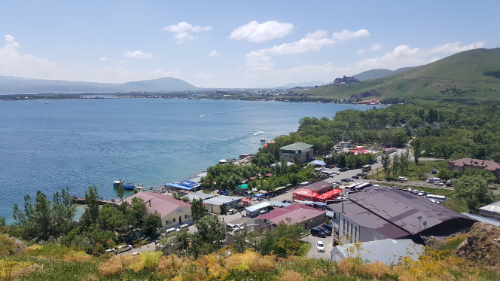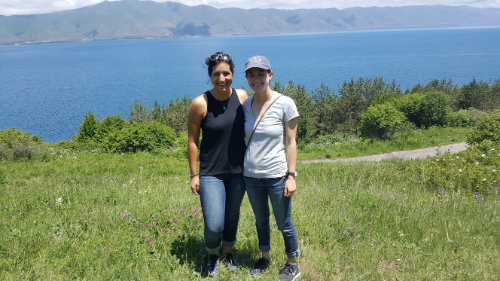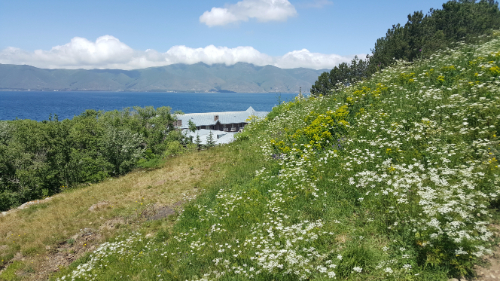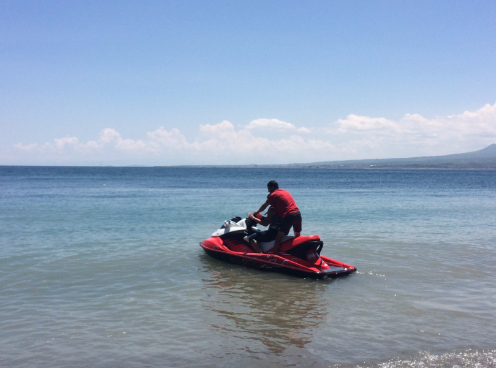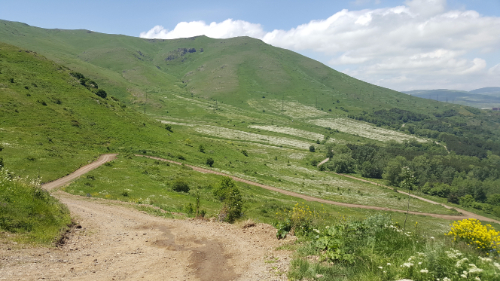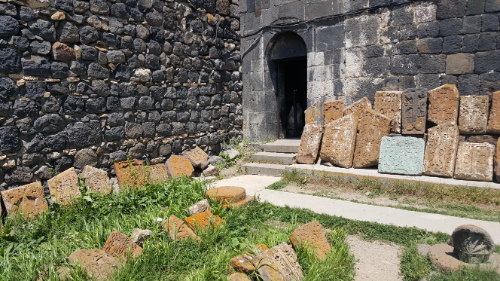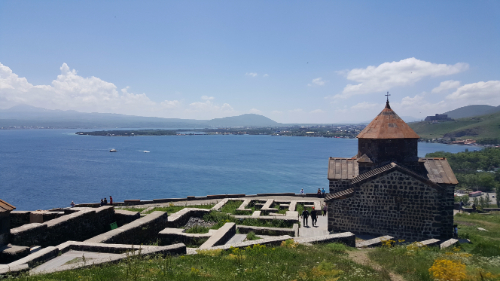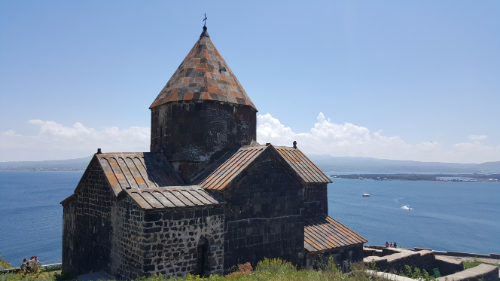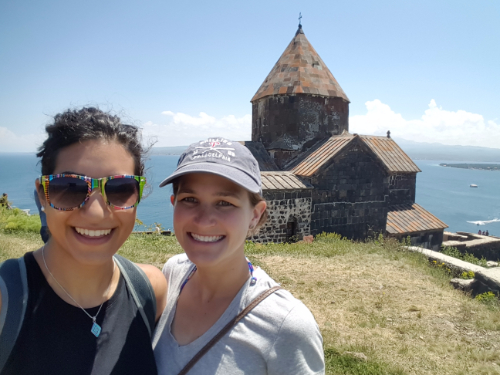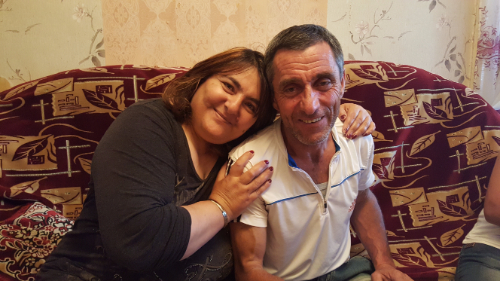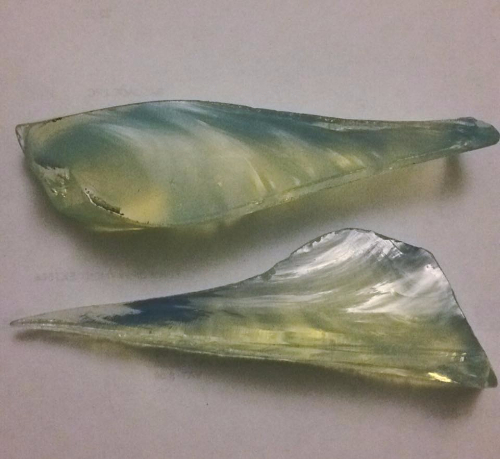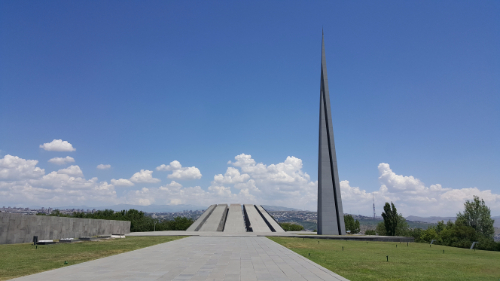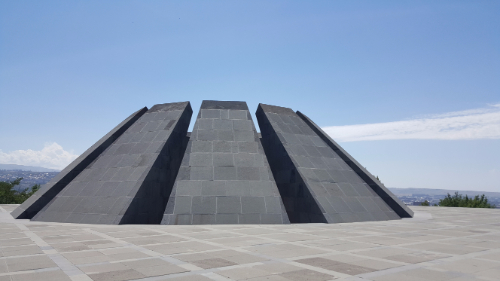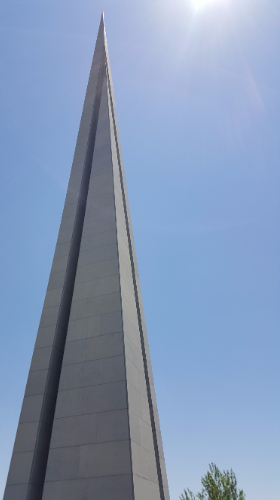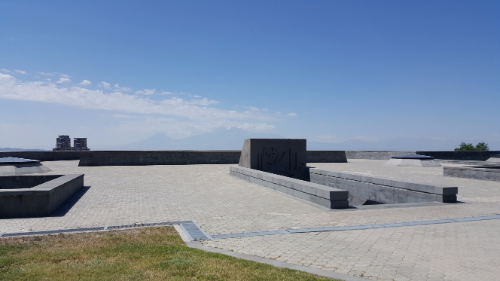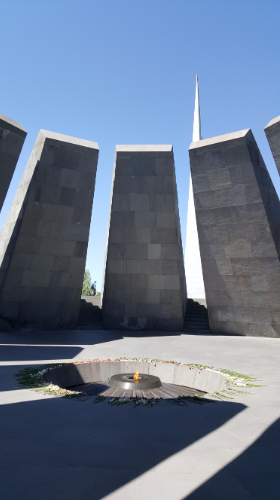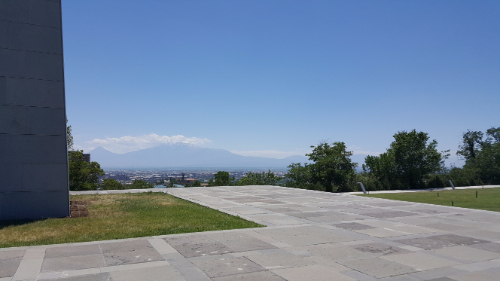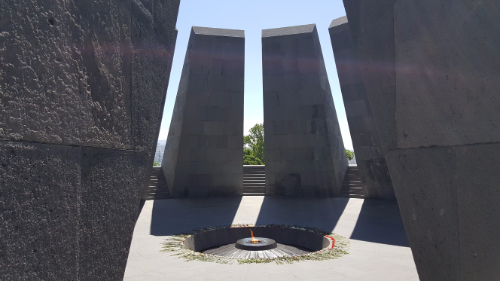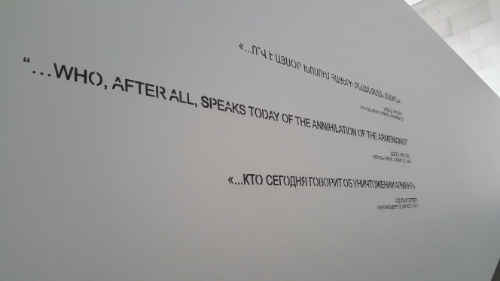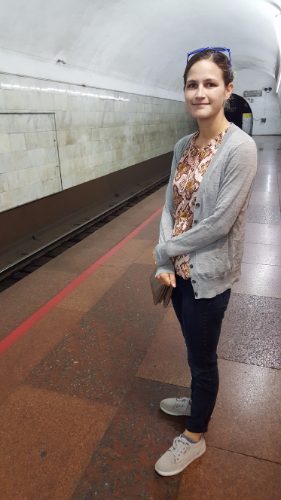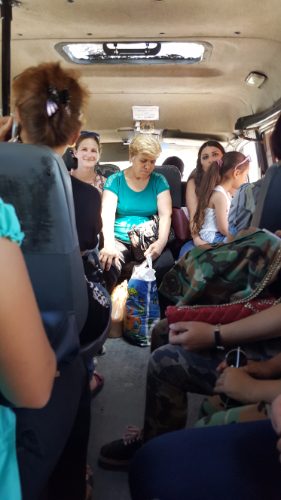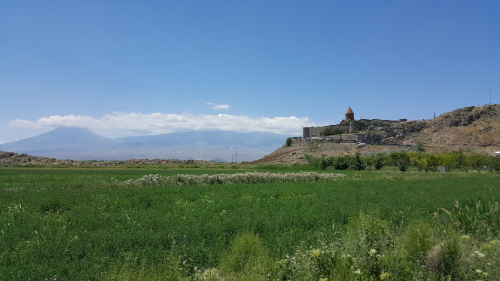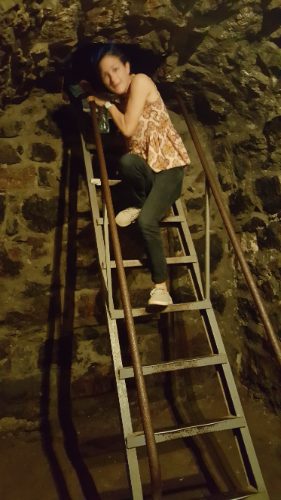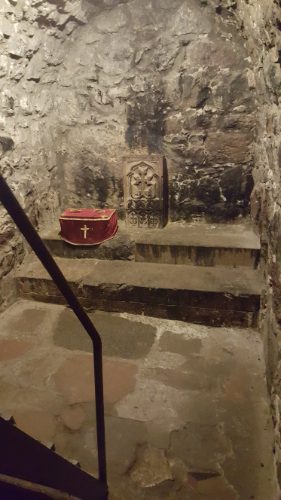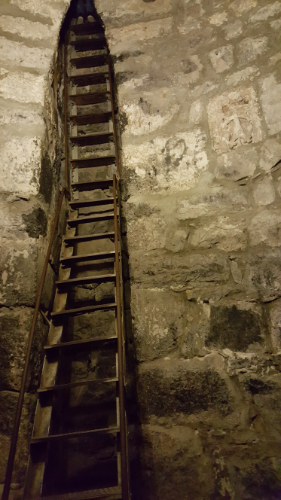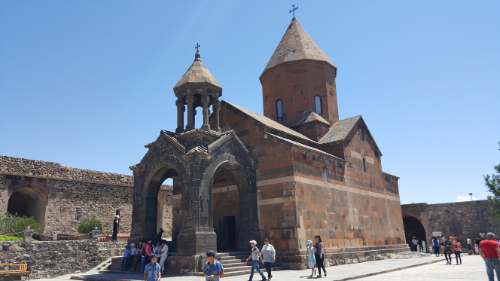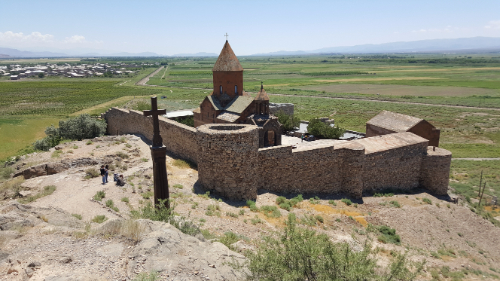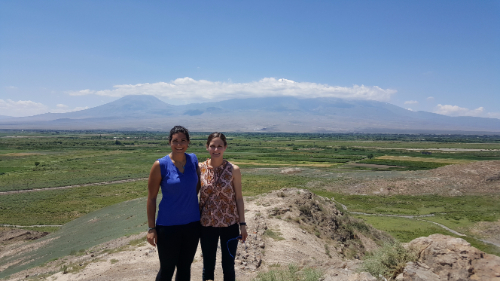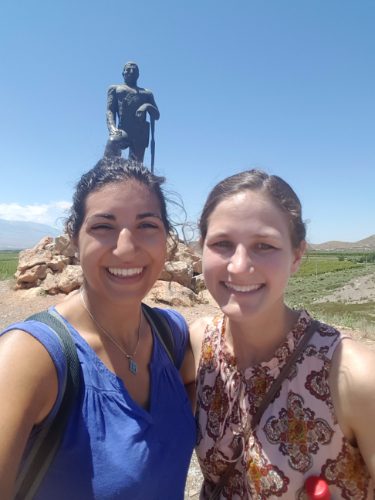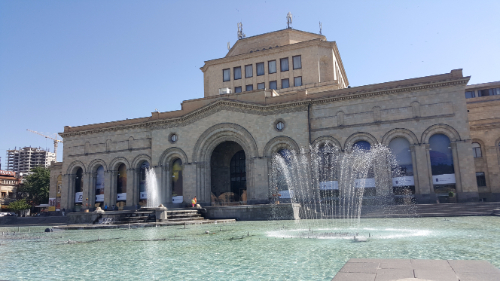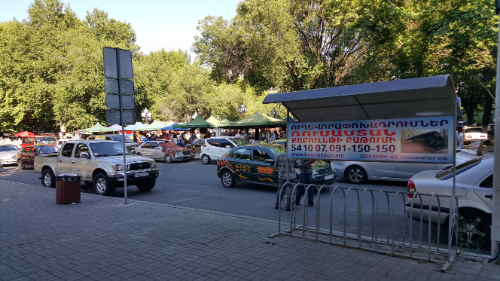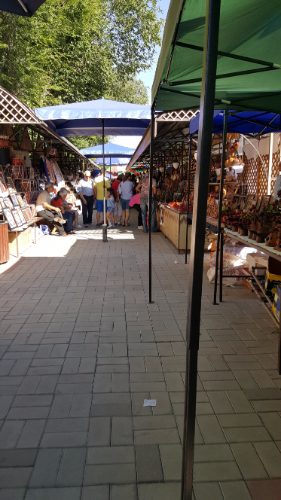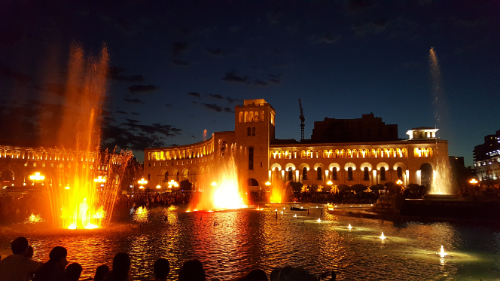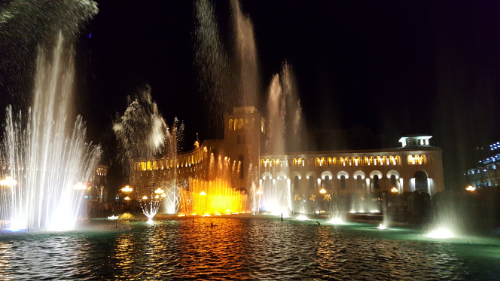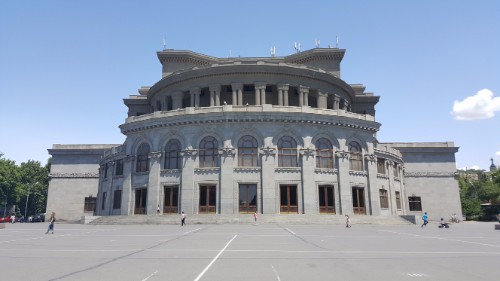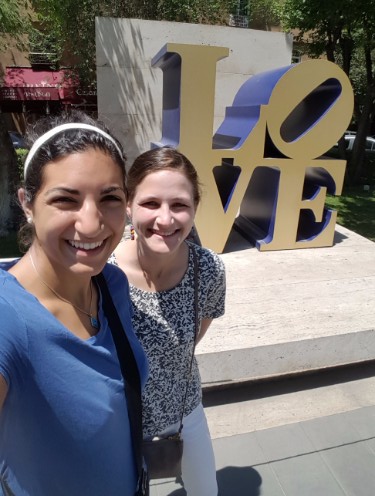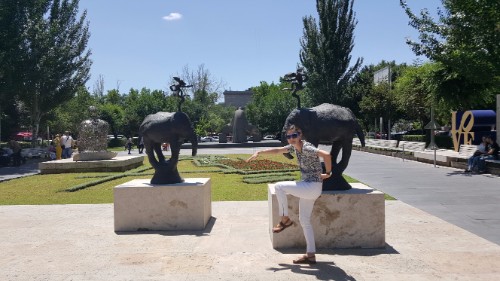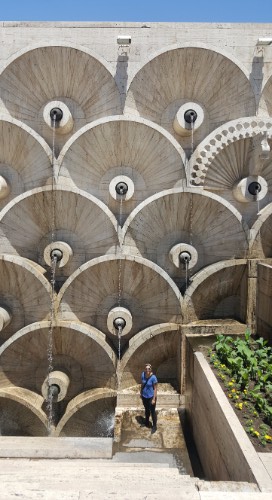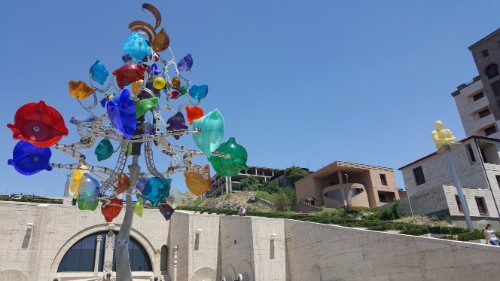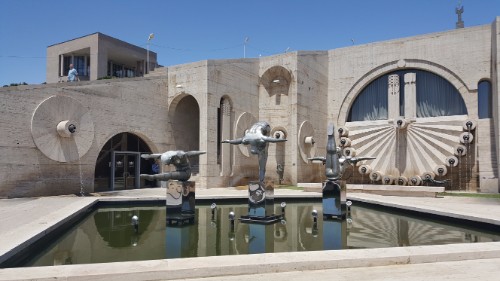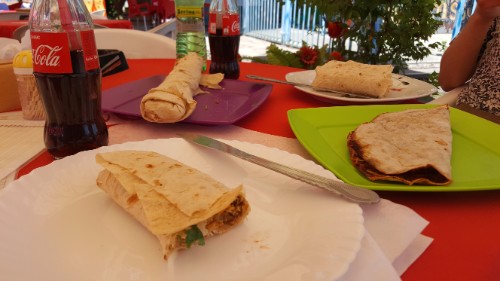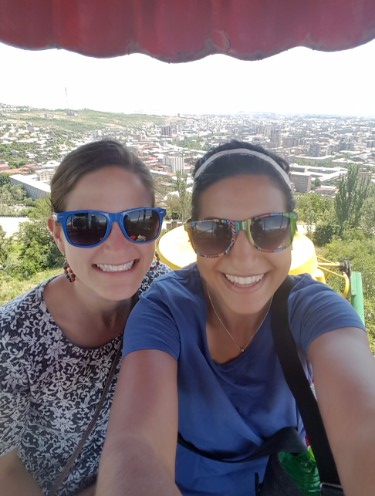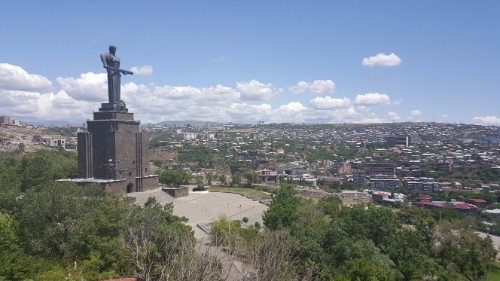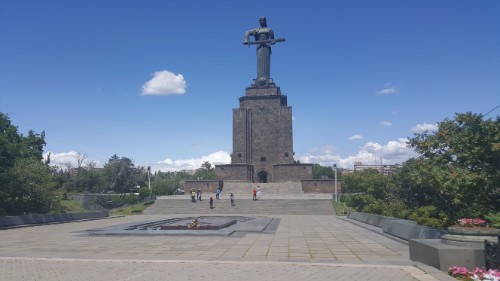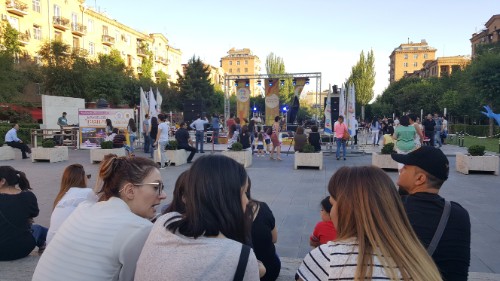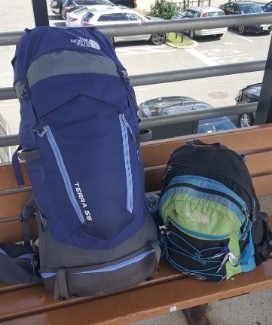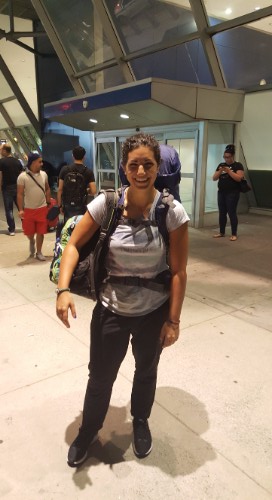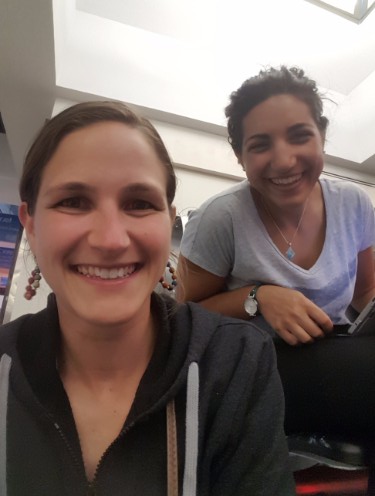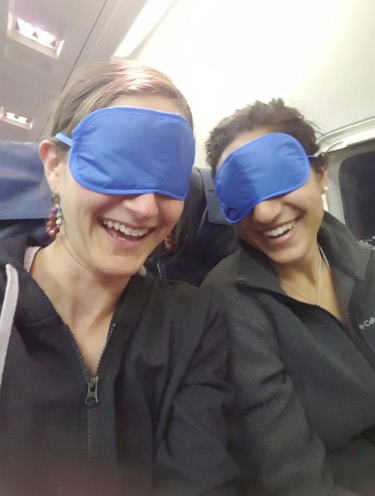One thing that there’s no shortage of in Armenia is churches. We wanted to go to Etchmiadzin (basically the Vatican of Armenia), and we decided to turn it into a full-on church day.
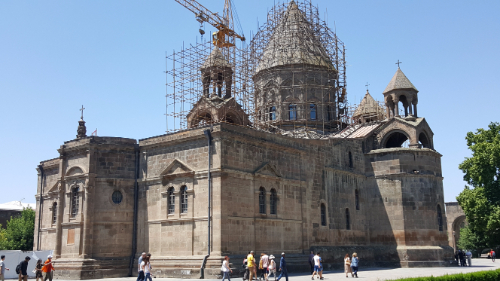
Etchmiadzin is located in Vagharshapat, a town about half an hour west of Yerevan. Even though the town isn’t that big, there are five churches there (including Etchmiadzin which is like a little church city), so we decided to visit them all. Why not, right?
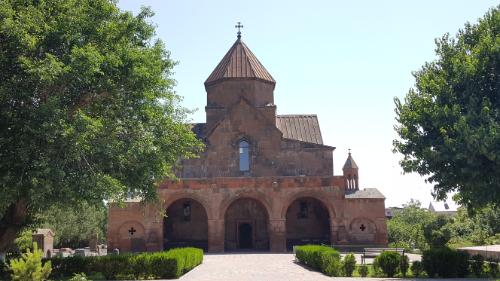
We did the usual routine, taking a city bus to a marshrutka station and getting a marshrutka from there to Vagharshapat. The churches we were planning to see were kind of laid out in an L-shape, so we started at one end of the L and worked our way through. The first stop was the Church of Saint Gayane. It was built originally in 630AD and had some renovations done in 1652. Just pause for a second… That. Is. Ridiculous. I don’t know about you, but I think that St. Peter’s (the Vatican) is old, and construction on that didn’t start until the 1500s! Also, the fact that they went over 1000 years without needing renovations, and that after 1000 years they just did some work on the dome and ceilings, is crazy. Who knows, maybe it’s not as impressive as I think, but it sounds pretty good to me!
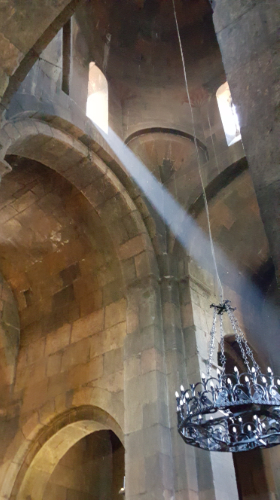
Anyway, do you want to hear the story of Saint Gayane? Because obviously she has a story because everything is part of a long, interconnected history here. Get ready for your head to hurt a little. Remember how I talked about St. Gregory? The guy who was imprisoned for 13 years in the pit in Khor Virap and was only freed when the king went mad? Well, the reason why the king went mad has something to do with both Saint Gayane and Saint Hripsime, the namesake of church #5 in our Vagharshapat church tour. (Note: this is another one of those stories that definitely has a certain amount of fact in it but has also certainly been embellished over the years. You can decide what you want to take and leave.)
The word is that Gayane was the head of an abbey of nuns in Rome, with Hripsime included. Hripsime was very beautiful, and Diocletian, the Roman emperor, noticed her and wanted to force her to marry him. The entire abbey of 30-some nuns fled Rome and ended up in Vagharshapat. There, Hripsime attracted the attention of yet another unwanted suitor, King Tiridates III, the same king who St. Gregory helped. When she refused his advances, she and the rest of the nuns were tortured and martyred. Some stories say that the king also fell in love with Gayane, and she also refused him. The exact facts on this are a little unclear, as are the exact methods of the martyring. Both Saint Gayane and Saint Hripsime’s churches are supposedly built on the sites where each woman was killed, and the rest of the nuns were killed at the future site of Shoghakat (church #4 on the tour). I read somewhere that Saint Hripsime was stoned, and her church supposedly has some of the actual stones that were used. Who knows if that’s true, but I can attest that there’s a little glassed-in alcove in the wall near her tomb with some rocks in it. Anyway, these women are considered the first Christian martyrs in Armenia’s history.
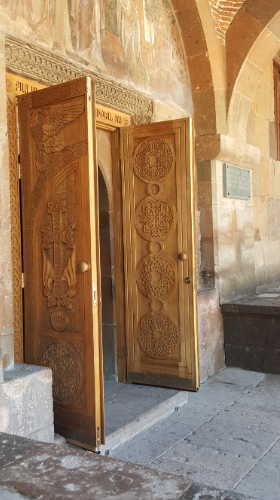
After killing a bunch of nuns for doing nothing wrong, the king went crazy (with some stories saying that he literally turned into a wild boar or that he had a boar’s head), and that’s when St. Gregory came in and saved the day and Armenia became the first Christian nation. So really, these women deserve the credit for turning Armenia into the country that it is today, though it would have been nice if they didn’t have to be murdered for that to happen.
Saint Gayane’s church is beautiful. It’s the same style as so many other Armenian churches, but I still think they’re all super cool. The doors are wooden and covered with insanely intricate carvings (Sarah closely examined and marveled at a door for a solid 5 minutes: “This is WOOD??! And someone carved it like THIS? What if they messed up? How did they do this? THIS IS AMAZING. This is WOOD??”) The inside of the church is simple, but it’s still impressive when you think about the fact that it’s stone, and all of those stones had to be shaped and fit together perfectly to make all the curves and arches.
Etchmiadzin (church #2) was up next. Guess who is involved with the story of Etchmiadzin? If you said “St. Gregory”, you win! St. Gregory had a vision of Jesus Christ descending from heaven and striking the site with a golden hammer, so that’s where the cathedral was built. Etchimiadzin means “where the Only Begotten descended”. It was originally built in 301AD and is considered the oldest cathedral in the world, but it has been destroyed and rebuilt many times since the original. It is the headquarters of the Armenian Apostolic Church and is where the Catolicos (like the Armenian pope) resides.
The inside of this church was anything BUT simple. Everything was beautifully painted, and Sarah and I sat on a bench inside and just stared at the walls and ceilings until we felt ready to leave. It was beautiful. Check out the pictures because words aren’t sufficient.
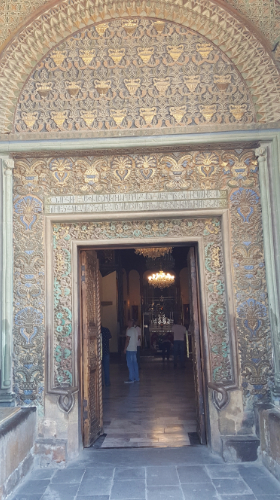
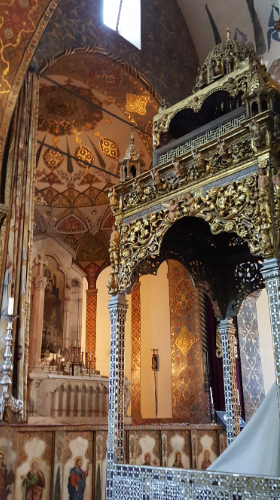
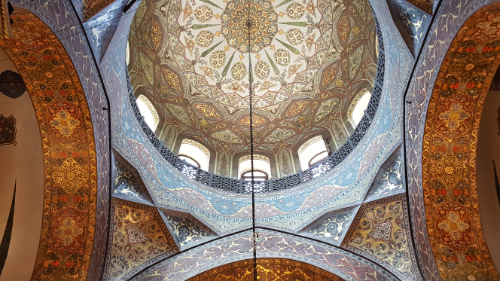
Church #3 was Holy Mother of God Church. No crazy story with this one. There was an actual service going on when we visited, so that was fun to see. That also means I don’t have any pictures though, so you’ll just have to go for yourself if you want to know what it’s like.
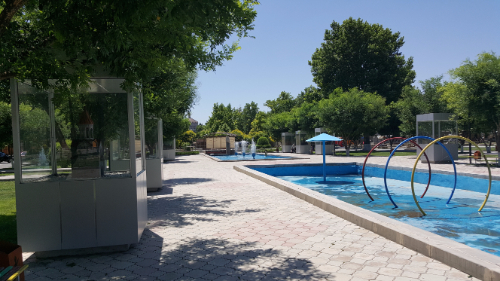
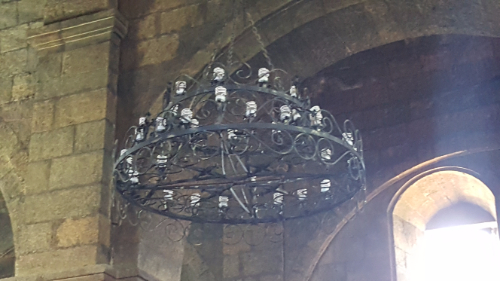
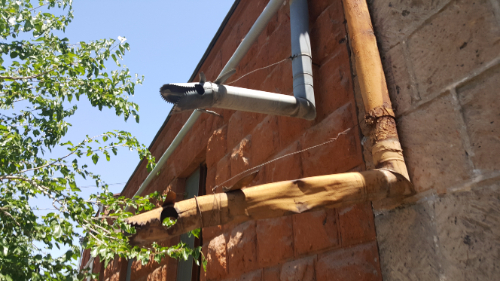
Church #4 was Shoghakat, the site where the remaining nuns were martyred. That was probably the smallest of the five churches, but it was still interesting to see and compare it to the others.
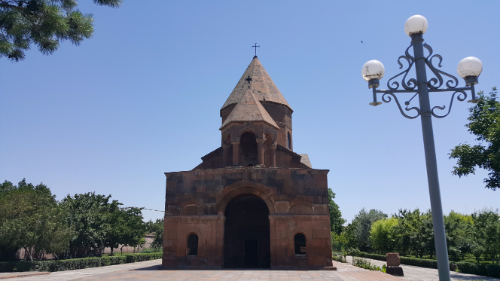
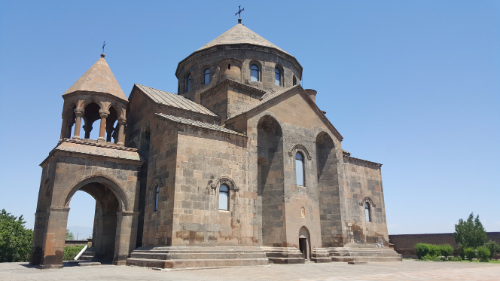
Finally, church #5 was St. Hripsime’s church. It’s definitely one of my favorites if you’re going off of exterior appearance, and the fact that it’s basically sitting on a pedestal probably helps. It makes the church seem so much more commanding because it’s raised up above the surroundings, and nothing is impeding your view of it. The inside was simple again, but very pretty. I think it was set up for a wedding or something because the aisle was lined with candles and flowers (Sarah and I approved… they looked nice). We popped our heads into the tomb to see the glass-encased stones and then high-tailed it out of there because it felt weird.
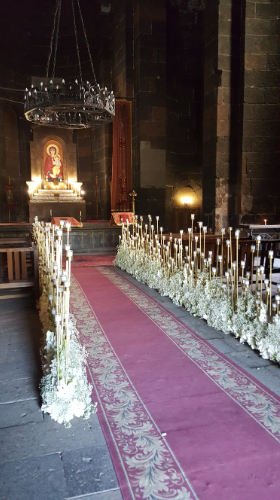
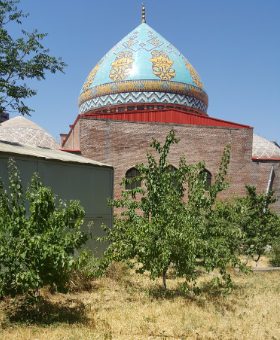
When we got back to Yerevan, we stopped by the Blue Mosque, the only active mosque in all of Armenia. It avoided the fate of other mosques because it was temporarily the History Museum of Yerevan. It seems like temporary repurposing is the only way that religious buildings make it through tumultuous times. We only snuck into the complex for a couple of seconds because it technically wasn’t visiting hours, but the mosaic work on the mosque is awesome.
Last stop was St. Gregory the Illuminator Cathedral (yes, as in our BFF St. Gregory) which is the biggest Armenian church in the world. It was finished in 2001 for the 1700th anniversary of Christianity as the state religion of Armenia. It is massive, obviously, and very simple inside except for a crazy big chandelier that I didn’t feel comfortable taking a picture of at the time. I could probably go into more detail, but I’m exhausted just writing this, and I’m sure you’re exhausted reading it. Gosh, Armenia. You have too much history!
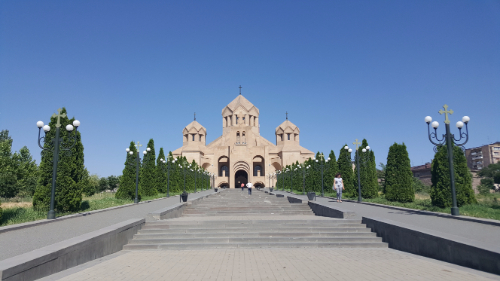
Congratulations, you’ve now virtually visited EVERY mosque in Armenia and six of the 1 bagazillion churches in Armenia. How does it feel?

